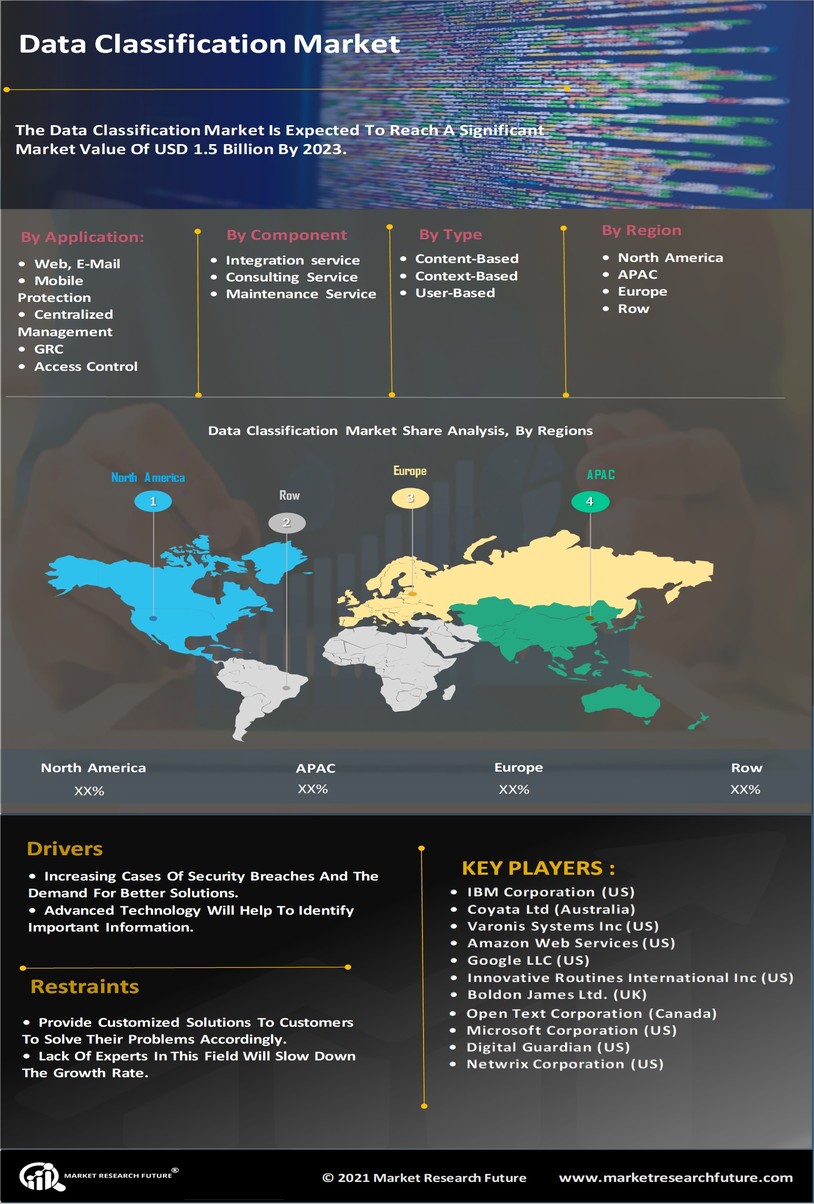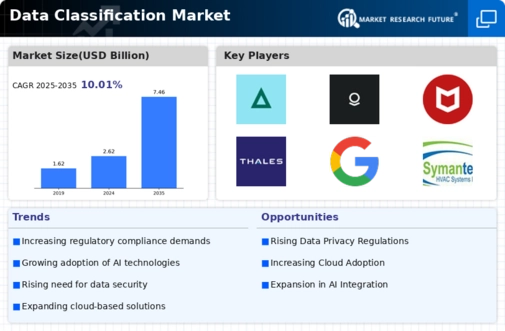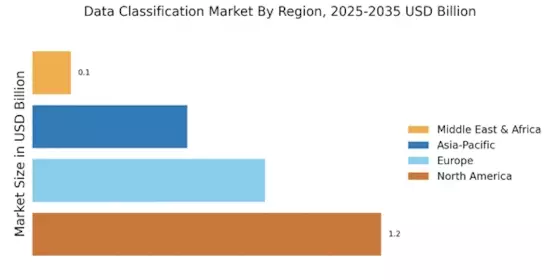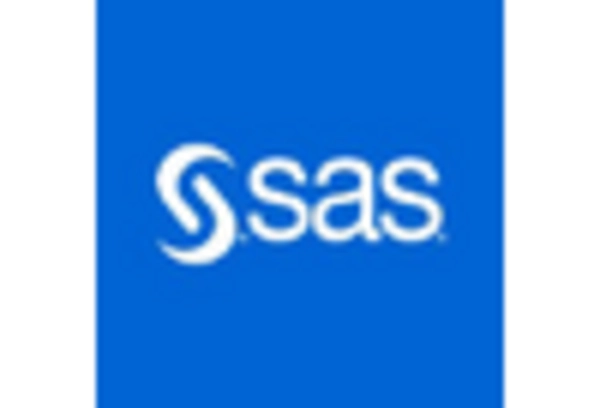Growing Data Volume
The exponential increase in data generation across various sectors is a primary driver for the Data Classification Market. Organizations are inundated with vast amounts of structured and unstructured data, necessitating effective classification methods to manage and utilize this information. According to recent estimates, the total data created globally is expected to reach 175 zettabytes by 2025. This surge in data volume compels businesses to adopt data classification solutions to ensure efficient data management, compliance with regulations, and enhanced decision-making processes. As organizations strive to harness the potential of big data, the demand for sophisticated classification tools and technologies is likely to escalate, thereby propelling the growth of the Data Classification Market.
Enhanced Data Security Needs
In an era where data breaches and cyber threats are increasingly prevalent, the need for enhanced data security is paramount. The Data Classification Market is significantly influenced by organizations' efforts to protect sensitive information from unauthorized access and potential misuse. By implementing robust data classification solutions, businesses can identify and categorize data based on its sensitivity, thereby applying appropriate security measures. The Data Classification Market is projected to reach 345 billion USD by 2026, indicating a strong correlation between data security needs and the growth of the Data Classification Market. As organizations prioritize data protection, the demand for classification tools that facilitate secure data handling is expected to rise.
Adoption of Cloud Technologies
The increasing adoption of cloud technologies is reshaping the Data Classification Market. As organizations migrate to cloud-based environments, the need for effective data classification becomes more pronounced. Cloud platforms often host vast amounts of data, necessitating robust classification mechanisms to ensure data integrity and security. The cloud computing market is projected to reach 832 billion USD by 2025, highlighting the significant shift towards cloud solutions. This transition compels organizations to implement data classification strategies that align with cloud architectures, thereby enhancing data management and compliance. Consequently, the Data Classification Market is poised for growth as businesses seek to optimize their cloud data handling through effective classification.
Regulatory Compliance Pressure
The landscape of regulatory compliance is becoming increasingly complex, with organizations facing stringent requirements to protect sensitive data. This pressure drives the Data Classification Market as businesses seek to comply with regulations such as GDPR, HIPAA, and CCPA. These regulations mandate that organizations classify and manage data appropriately to ensure privacy and security. Failure to comply can result in hefty fines and reputational damage, prompting companies to invest in data classification solutions. The market for compliance management tools is anticipated to grow significantly, reflecting the critical role of data classification in meeting regulatory demands. As compliance requirements evolve, the Data Classification Market is likely to expand in response to these challenges.
Integration of Advanced Technologies
The integration of advanced technologies such as artificial intelligence and machine learning is transforming the Data Classification Market. These technologies enable organizations to automate and enhance the data classification process, improving accuracy and efficiency. AI-driven classification tools can analyze data patterns and classify information in real-time, significantly reducing manual effort and errors. The market for AI in data management is expected to grow substantially, indicating a shift towards more intelligent classification solutions. As organizations increasingly recognize the benefits of leveraging advanced technologies for data classification, the demand for innovative solutions is likely to surge, further propelling the growth of the Data Classification Market.


















Leave a Comment